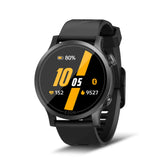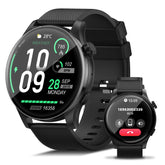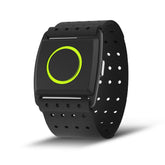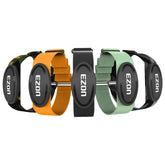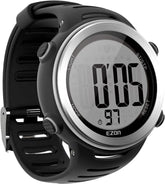Mastering Calorie Burn: A Guide for Fitness Enthusiasts
Understanding how to effectively burn calories during exercise is crucial for fitness enthusiasts looking to achieve their health and fitness goals. Whether you’re aiming to lose weight, build muscle, or improve overall fitness, knowing the science behind calorie expenditure can help you design a more effective workout routine. In this guide, we’ll explore how different types of workouts, their durations, and intensities affect calorie burn, and how to plan your fitness routine accordingly. We will also highlight tools like a calories burned calculator, calorie counter watches, and sports wearable technology to aid your journey.
The Science of Calorie Burn
What is a Calorie?
A calorie is a unit of energy that measures the amount of energy food provides to the body. When you exercise, your body burns calories to fuel your activities. The number of calories burned during exercise depends on various factors, including:
- Body Weight: Heavier individuals tend to burn more calories during physical activity than lighter individuals.
- Exercise Intensity: Higher intensity workouts generally result in greater calorie expenditure.
- Duration of Activity: The longer you engage in physical activity, the more calories you will burn.
- Type of Exercise: Different types of workouts have varying effects on calorie burn.
Basal Metabolic Rate (BMR)
Before diving into workouts, it's important to understand your Basal Metabolic Rate (BMR)—the number of calories your body burns at rest to maintain basic physiological functions such as breathing, circulation, and cell production. Knowing your BMR helps you understand how many calories you burn daily, even without exercise.
Calorie Burn by Workout Type
1. Aerobic Exercise
Examples: Running, cycling, swimming, and dancing.
- Calories Burned: Typically, aerobic exercises burn a significant number of calories per hour, depending on intensity.
- Intensity: Moderate-intensity activities burn about 400-600 calories per hour, while vigorous-intensity workouts can burn 600-900 calories per hour.
- Duration: Longer sessions (45-60 minutes or more) can maximize calorie burn.
2. Strength Training
Examples: Weightlifting, resistance training, and bodyweight exercises.
- Calories Burned: Strength training usually burns fewer calories during the workout (about 200-400 calories per hour) but contributes to muscle gain, which can increase your BMR over time.
- Intensity: Higher intensity and longer sets can elevate calorie expenditure.
- Duration: Aim for 30-60 minutes of strength training for optimal results.
3. High-Intensity Interval Training (HIIT)
Examples: Short bursts of intense activity followed by rest or lower intensity.
- Calories Burned: HIIT can burn 500-800 calories per hour, depending on the intensity and duration of intervals.
- Benefits: HIIT boosts post-exercise oxygen consumption (EPOC), leading to additional calorie burn after the workout.
- Duration: Sessions are typically shorter (20-30 minutes) but highly effective.
4. Low-Intensity Steady State (LISS)
Examples: Walking, leisurely cycling, and gentle yoga.
- Calories Burned: LISS is effective for burning calories (approximately 300-500 calories per hour) but is less intense than other forms of exercise.
- Benefits: Great for beginners or those recovering from injury; can be sustained for longer durations.
- Duration: Can range from 30 minutes to several hours, depending on your fitness level.
Tools to Track Calorie Burn
1. Calories Burned Calculator
Using a calories burned calculator can help you estimate the number of calories burned based on your activity, weight, duration, and intensity. These calculators provide a quick way to gauge your expenditure for various exercises.
2. Calorie Counter Watch
A calorie counter watch monitors your heart rate and activity levels throughout the day. These devices provide real-time calorie burn estimates based on your personal data, allowing for more accurate tracking of your workouts.
3. Sports Wearable Technology
Investing in sports wearable technology such as fitness trackers or smartwatches can enhance your ability to monitor your exercise routines. Many of these devices feature:
- Heart Rate Monitoring: Helps determine exercise intensity and corresponding calorie burn.
- Activity Tracking: Logs various activities throughout the day, providing a comprehensive view of your calorie expenditure.
- Workout Modes: Different settings for various exercises to calculate calories burned accurately.
Planning Your Fitness Routine
To maximize calorie burn and reach your fitness goals, consider the following tips:
- Mix It Up: Incorporate a variety of workout types (aerobic, strength, HIIT, and LISS) into your routine to keep things engaging and effective.
- Set Realistic Goals: Establish achievable calorie burn targets based on your fitness level and time commitment.
- Track Progress: Use a calorie counter watch or fitness tracker to monitor your activity levels and make adjustments as needed.
- Listen to Your Body: Pay attention to how your body responds to different intensities and durations. Adjust your plan to prevent burnout or injury.
Conclusion
Mastering calorie burn is essential for fitness enthusiasts looking to optimize their workouts and achieve their health goals. By understanding how different types of workouts, durations, and intensities affect calorie expenditure, you can create a well-rounded fitness routine. Utilize tools such as a calories burned calculator, a calorie counter watch, and sports wearable technology to track your progress and make informed decisions about your training. Embrace the journey, stay committed, and enjoy the rewards of your hard work!
